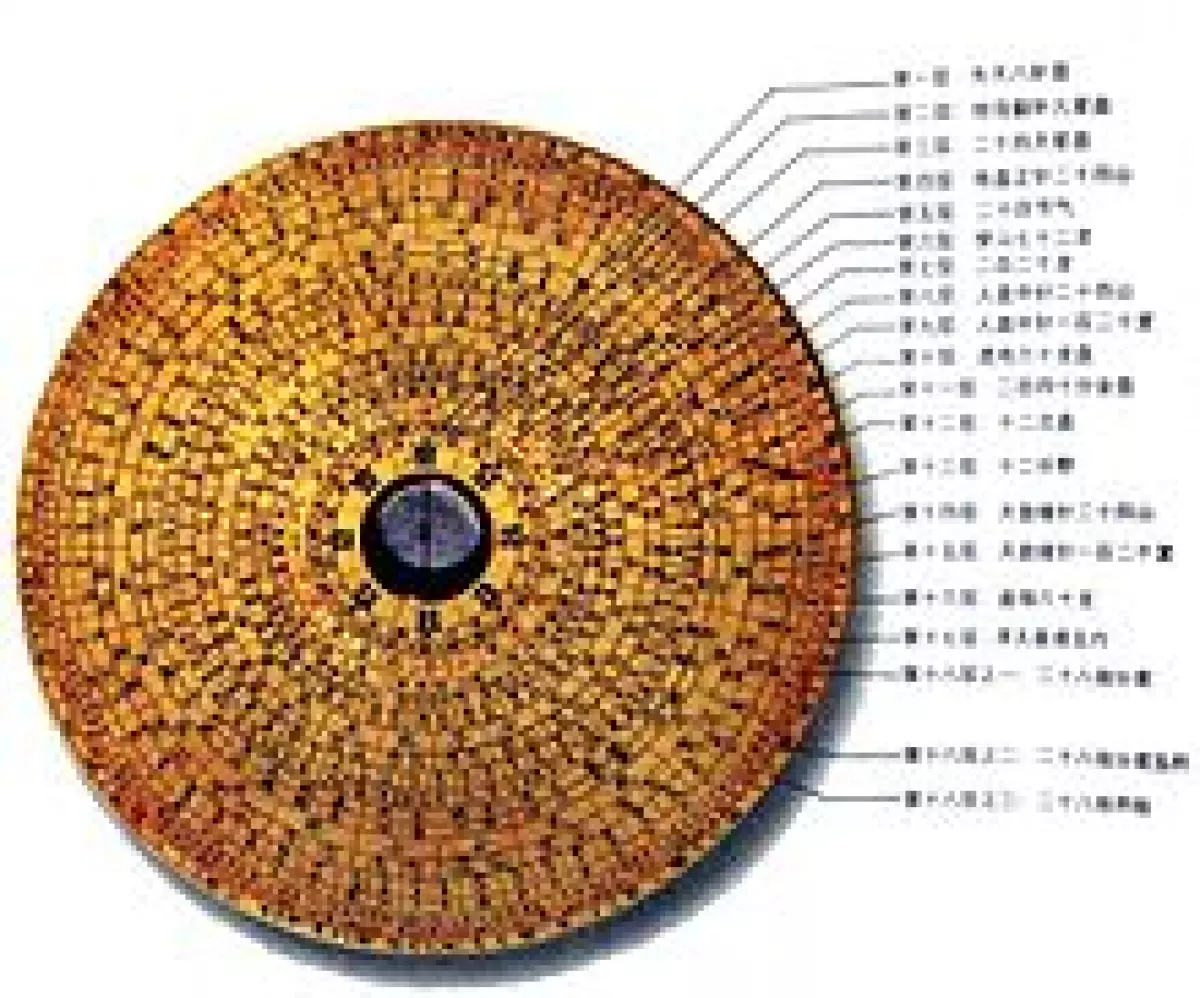Have you ever wondered how Feng Shui practitioners determine the precise direction of a structure, place, or item? The answer lies in the mystical device called the Luopan, also known as the geomantic compass. Let's delve into the fascinating world of Luopan and discover its hidden secrets.
Deciphering the Luopan
Like a conventional compass, the Luopan serves as a direction finder. However, it goes beyond its primary function by incorporating intricate Feng Shui formulas embedded in up to 40 concentric rings on its surface. This metal or wooden plate, also known as the "Heaven Dial," sits atop a wooden base called the "Earth Plate."
 Small feng shui compass, c. 1800-1894, from the Oxford College Archives of Emory University.
Small feng shui compass, c. 1800-1894, from the Oxford College Archives of Emory University.
A red wire or thread known as the "Heaven Center Cross Line" or "Red Cross Grid Line" crosses the Earth Plate and Heaven Dial at 90-degree angles. This line plays a vital role in finding directions and noting positions on the rings.
Unique Features of the Luopan
While a conventional compass typically has markings for four or eight directions, the Luopan boasts markings for 24 directions, translating to approximately 15 degrees per direction. This alignment with the solar term allows the Luopan to approximate a terrestrial day for each degree.
Interestingly, the Luopan doesn't point to the north magnetic pole like a regular compass. Instead, it directs attention to the south magnetic pole, giving it the Chinese name "zhinan zhen," meaning "south-pointing needle."
Types of Luopan
Throughout history, three types of Luopan have gained popularity: San He, San Yuan, and Zong He.
The San He Luopan, believed to have been used in the Tang dynasty, contains three basic 24-direction rings. Each ring corresponds to a different method and formula, known collectively as the "Three Harmonies."
The San Yuan Luopan, also known as the "Jiang Pan" or "Yi Pan," incorporates multiple formulas used in the San Yuan (Three Cycles) techniques. It features a 24-direction ring, the Earth Plate Correct Needle, the ring for the 64 hexagrams, and more.
The Zong He Luopan combines rings from both San He and San Yuan. It boasts three 24-direction rings and the 64 trigrams ring.
Beyond these three types, Feng Shui masters often design customized Luopans that suit their preferences and serve as invaluable tools for their students. These designs may include elements from the bagua (trigram) numbers, directions from the Eight Mansions methods, and even English equivalents.
Unraveling the History
The Luopan has a rich history rooted in ancient Chinese culture. Its origins can be traced back to tortoise plastrons used in divination, serving as an image of the cosmos or a world model. The markings found on the Luopan closely resemble those on a liubo board.
The earliest precursors of the Luopan, known as "shì" or "shìpán," were astrolabes or diviners' boards. Unearthed from tombs dating between 278 BCE and 209 BCE, these lacquered, two-sided boards featured astronomical sightlines and were used to chart the motion of Taiyi through the nine palaces.
The Luopan, with its earth and heaven plates, grid lines, and direction markers, evolved from these ancient astrolabes. It ultimately became the original magnetic compass known as the "south-pointing needle" developed specifically for Feng Shui.
Unlocking the Mysteries
The Luopan continues to be a vital tool for Feng Shui practitioners, guiding them in harnessing the flow of energy within spaces. Its intricate design and rich history make it an indispensable companion in unlocking the mysteries of balance and harmony.
Next time you encounter a Luopan, appreciate its profound significance and the wisdom it holds. Whether you seek to improve your living space or unravel the secrets of the universe, the Luopan will always stand as a testament to the ancient art of Feng Shui.
References:
- Cheng, Jian Jun; Fernandes-Gonçalves, Adriana (1998). Chinese Feng Shui Compass: Step by Step Guide. Nanchang, Jianxi: Jianxi Science and Technology Publishing House.
- Campbell, Wallace H. (2001). Earth Magnetism: A Guided Tour Through Magnetic Fields. San Diego: Academic Press.
- Kalinowski, Mark; Brooks, Phyllis (1998). "The Xingde 刑德 Texts from Mawangdui". Early China. 23: 125-202.
- Yin, Difei (1978). "Xi-Han Ruyinhou de zhanpan he tianwen yiqi" 西漢汝陰侯的占盤和天文儀器 [Western Han Lord of Runyin's divining plate and astrological apparatus]. Kaogu. 5: 338-343.
- Yan, Dunjie (1978). "Guanyu Xi-Han chuqi de shipan he zhanpan" 關於西漢初期的式盤和占盤 [Regarding Western Han's early shìpán and divining plates]. Kaogu. 5: 334-37.
- Lewis, Mark Edward (2006). The Construction of Space in Early China. SUNY series in Chinese philosophy and culture. Albany, NY: State University of New York Press.
- Allan, Sarah (1991). "The shape of the cosmos". The Shape of the Turtle: Myth, Art, and Cosmos in Early China. SUNY series in Chinese philosophy and culture. Albany, NY: State University of New York Press.
Further reading:
- Skinner, Stephen (2008). Guide to the Feng Shui Compass: a Compendium of Classical Feng Shui. Singapore: Golden Hoard Press.
- The Lowdown on the Luo pan - Feng Shui for Modern Living Magazine.

















